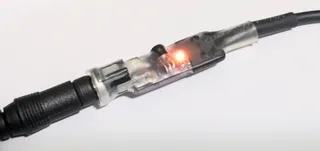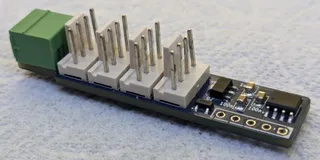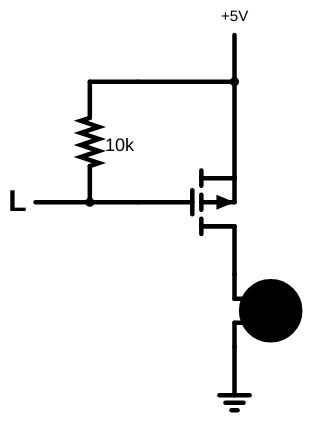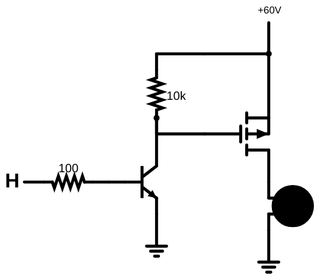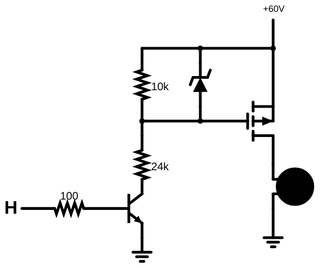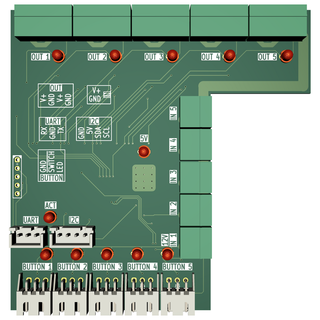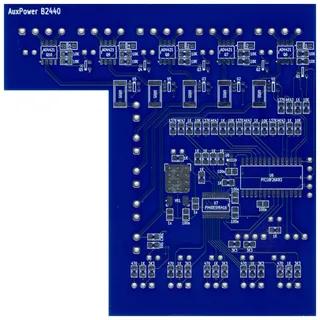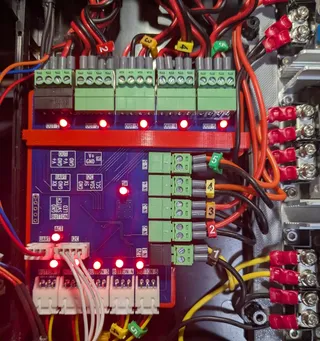AuxPower1U: Requirements
This is post 1 in the series (next: Features).
As part of my home server setup, I have a few devices that have “free-floating” power supplies. For example, my modem, my wireless PoE adapters, and a few test boxes all have their power supply pushed into rack’s nooks and crannies. Even worse, since I want to have the capability to reset them, they are connected via ResetBox (or its type-C variant) making cable situation even messier. It’s way beyond time to sort that out!
In this blog series, I will go over what’s needed to design a nice 1U box that can fit all (or as many as I can) different power supplies togethe. Their outputs should be resettable by physical buttons on the device’s front. Since I actually didn’t finish the project as I’m typing this, expect the series not only to last a few months while I gather all necessary equipment but also for my “specifications” to shift slightly as I discover new things or rethink my old ways.
At first, let’s look at what power supplies we have currently:
12V25W: Arris SURFboard Modem22V-57V20W: Mikrotik hAP ac24-57V30W: Mikrotik Audience12-28V40W: Mikrotik hAP ax319.5V65W: Dell OptiPlex 3050 Micro12-19V65W: Intel NUC54V15W: Netgear GS305EPP (150W max)
If I squint hard enough, there are three distinct power supplies to use there; the first one being a simple 12V power supply for modem. Power usage will be really low on this one, so any hardware we place will run from it too.
To the second power supply, I had to give a bit more thought. Without question, it has to run of the UPS but its target voltage is a bit of an unknown. Currently, I am running my hAP ac and Audience from a 20V type-C power supply, and Audience doesn’t seem to love it as any minor transient causes reset. And yes, officially Audience doesn’t run that low, but I got lucky, I guess. Previously, I was running my WiFi routers on 48V and both were fine with that; so there are my two daya points. Considering other devices, I was leaning toward selecting 24V as a second power supply.
However, that leaves my NetGear PoE switch a bit of a loner and outside of The Box. For it, I would need to provide a proper 55V PoE power supply or at least 48V if stars align. The downside of this approach is that it leaves my Mikrotik hAP ax3 either on 12V or for the last, non-UPS power supply. But the upside is that it allows for a bit of future-proofing.
That leaves 2 non-UPS computers. Why are they not using UPS? Well, in my setup, UPS power is really limited and is reserved for only two categories: my main server and my Internet delivery devices (modem, router, WiFi APs). Anything else just needs to handle a power loss. These two computers fall into “anything else” category.
Intel NUC, we can already see, is flexible with a power supply specification. When it comes to standard industrial voltages, it can handle both 12V and 15V inputs. However, it Dell bretheren officially are not that flexible. While there is a possibility my 3050 micro would work on 15V, anything higher is a no-go. And since Dell authenticates its chargers, to figure this out, I’d need to trick it first into accepting such voltage - all of which smells like another sub-project. :)
If Dell doesn’t want to cooperate, the only way forward would be to use one of many buck modules intended for RVs that brings 24V to 19V. I would really like to avoid this, if possible, because the last thing I need is yet another power supply. However, it’s good to have options. And yes, ideally, I would find a 19V power supply; but I have a feeling that finding one that can be properly mounted inside a 1U case is not going to happen.
This brings us to the following rough power supply distribution (with a bit of derating on power specification):
12V150W(100Wif I kick out Mikrotik hAP ax3 from my network):25W: Arris SURFboard Modem25W: Control boards40W: Mikrotik hAP ax3
15V/19V/24V200W(150Wshould be realistically more than fine):65W: Dell OptiPlex 3050 Micro65W: Intel NUC
48V/55V100W(going higher than this might be good for the future PoE devices):20W: Mikrotik hAP ac30W: Mikrotik Audience15W: Netgear GS30s5EPP
There is an alternative at a bit lower voltage:
12V75W25W: Arris SURFboard Modem25W: Control boards
15V/19V/24V200W(150Wshould be realistically more than fine):65W: Dell OptiPlex 3050 Micro65W: Intel NUC
24V150W20W: Mikrotik hAP ac30W: Mikrotik Audience40W: Mikrotik hAP ax3
Out-of-scope
15W: Netgear GS30s5EPP
I am strongly leaning toward option 1, but option 2 is a good alternative. And yes, Mikrotik is not as power hungry as it seems above; I’ve never seen it reach its maximum power usage. However, since I really love my network, I use those numbers to bring an additional margin to the dimensioning process. If I find a nice power supply that’s slightly below what I need, I will get it and not worry about it. But, before I get to that, this fudged accounting provides more visibility into what brings the most value.
For various protection circuits, I’, going to rely onto power supplies to protect themselves. Thus, at minimum, I expect any selected power supply to have over-voltage, over-current, short-circuit, and over-temperature protection built-in.
When it comes to controlling this, I would say that ability to reset my Modem and WiFi is a must. And these can be two buttons as I want to be able to separately restart modem. For the hAP ax3, I don’t care as much since it has “under test” status in my network at this time. But let’s argue that it needs to be a separate button. At this time, I do control each of my computers inside the rack via smart plug so moving them into The Box, I might want to see a button for each, but I wouldn’t really mind if both go down at the same time. This brings the total number of reset buttons to somewhere between a minimum of three and a maximum of seven.
Lastly, this blog post leaves us with the following action items I will probably get around to solving:
- Chck can Netgear GS305EPP work on 48V
- Make trigger board for Dell
- Check does Dell Optiplex 3050 Micro work on 15V
